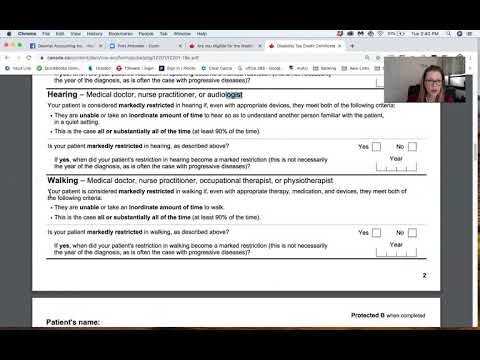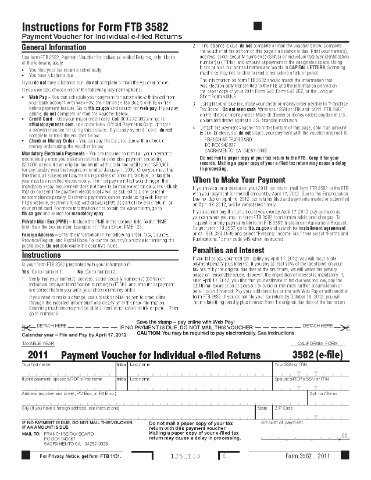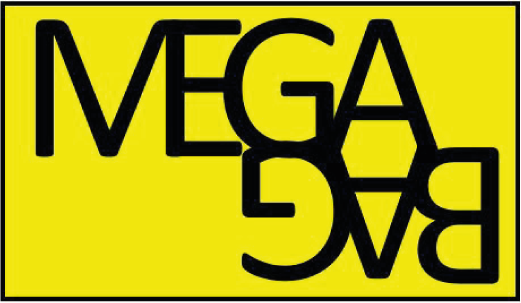Contents:


JIT inventory guarantees that there is just the correct quantity of inventory to manufacture just what you need, when you need it by keeping inventory levels at a constant level. In order to attain high production volumes with low inventory on hand, it is necessary to increase efficiency while simultaneously minimising waste. As with just-in-time inventory management, just-in-case has its downsides. Its robustness and ability to stave off back orders and unhappy customers comes at a cost of tying up capital in inventory.
Establishing a strong relationship with reliable and efficient suppliers with the ability to source and deliver small batches of raw materials on time. Therefore, from the preceding, it should be understood that Kanban is an inventory scheduling system within the larger JIT inventory management system. No matter the inventory method, you always rely on manufacturers and suppliers to control their production time frame. With JIT inventory, since you don’t have any extra stock, this can come back to bite you. However, a JIT system could also work for a new, low-budget business with limited space for product storage. Just keep in mind that such a system would probably benefit from continuous improvement as you develop your supply chain and manufacturing processes.
Advantages & Disadvantages of Just-in-Time Inventory
It also improves inventory control and keeps track of several aspects like pricing, product details and more. In 1997 a fire that took place at a brake parts plant owned by the company Aisin destroyed its capacity to produce a P-valve part for Toyota vehicles. Aisin was the sole supplier of this part for Toyota, and the company had to shut down production for several weeks. Because of Toyota’s JIT inventory levels, it ran out of P-valve parts after just one day. Additionally, it needs reliable suppliers that can always deliver parts quickly, and the ability to efficiently assemble machines that put together its vehicles. When inventory lot sizes are so small , it makes more sense to place them in very small transport containers and move them to the next workstation by a conveyor belt.
JIT production scheduling ensures that jobs are scheduled exactly when they are needed, meaning that your production runs start and end just in time for shipping. Just-in-time inventory management is a positive cost-cutting inventory management strategy, although it can also lead to stockouts. The goal of JIT is to improve a company’s return on investment by reducing non-essential costs. A just in time inventory system, or JIT system, is an inventory strategy where raw materials and supplies are ordered and received as they’re needed. The just in time system requires a strong relationship between the retailer, an online marketplace, and the supplier.
Regulatory Review: Legislative Actions Poised to Impact Pharmacy … – Drug Topics
Regulatory Review: Legislative Actions Poised to Impact Pharmacy ….
Posted: Thu, 13 Apr 2023 07:00:00 GMT [source]
The approach was developed in post-World War II Japan, when car manufacturing faced shortages and had to minimize resource consumption to survive and remain competitive. Brainyard delivers data-driven insights and expert advice to help businesses discover, interpret and act on emerging opportunities and trends. Investopedia requires writers to use primary sources to support their work. These include white papers, government data, original reporting, and interviews with industry experts.
Because you order only when your customer places an order, your item is already sold before it reaches you, so there is no need to store your items for long. Companies that follow the just-in-time inventory model will be able to reduce the number of items in their warehouses or eliminate warehouses altogether. Companies that are successful at JIT inventory management maximize profits by keeping investment in stock as low as possible. They use an ERP system to gather information on shipping, customer satisfaction, loss prevention, warehousing, purchases, reorders, goods in storage, receiving, stock turnover and more. JIT inventory management boosts a company’s ROI by lowering inventory carrying costs, increasing efficiency and decreasing waste. In JIT, all parts of any production or service system, particularly people, are interconnected.
Advantage: Reduces Clutter and Waste
JIT inventory management ensures that stock arrives as it is needed for production or to meet consumer demand, but no sooner. The goal is to eliminate waste and increase the efficiency of your operations. Since the main objective is often quality and not the lowest price, JIT requires long-term contracts with reliable suppliers.
Most important, it is perfectly possible to take elements of one system and add them to the other. Given the importance of lead-time reduction, in fact, it is crucial for managers to measure lead-time performance and provide feedback on response and turnaround times to each work center and shop. Though MRP systems do little to encourage good lead-time performance directly, managers can introduce measurement and incentive schemes based on MRP’s data collection capabilities.

Within any manufacturing process, there is a big dependency on quality infrastructure and timing. This includes efficiency in the flow of raw materials and a reliable workforce. Also known as lean manufacturing, the Just-in-Time inventory management is a strategy focused on increasing efficiency and decreasing inventory carrying costs for a company. First introduced in Japan in the 1970’s, the JIT manufacturing method started being put into practice by Taichii Ohno, a Toyota employee.
But once you get it down, JIT systems can enhance the efficiency and profitability of your business. To succeed with JIT, you must accurately track sales and predict customer demand. Failure to do so can cause you to sell products faster than you can replenish them.
Why Is Inventory Control Important?
Manufacturers no longer need to build up large amounts of manufacturing inventory as the product life cycle is shorter in JIT. This also allows the retailers to limit their offerings and put their full focus on only a few products youkeep on-hand for fewer inventory days. The JIT model requires consistent communication with your vendors. Work with them to establish a good relationship and share information as often as possible. This will keep you ahead of issues with lead time and avoid running into problems meeting demand.
Softwares should be adopted as it makes the whole process more manageable. Even though a good software help you it can be a bit tricky and/or expensive to adopt a new software system and train your personnel accordingly to use the same. In case of disruptions, a JIT model can have a major impact on the business. Since there is no excess stock to fall back on, sales may come to a halt.
This will help you determine demand fluctuations and seasonal trends—all of which will help you order the right amounts of product at the right times when you move to a JIT strategy. If you’re looking to maintain a steady supply of products while keeping inventory costs low, a JIT system may be right for your business. Supermarkets take advantage of just-in-time delivery by only restocking a product once customers have bought nearly all available items. The demand for any item directly affects supply, meaning the market replenishes some goods on a regular basis and others infrequently. JIT aims to reduce waste by only taking in inventory as needed for production.
What is Just-in-Time Inventory Control?
Risk of losing revenue in case of a mishap in the supply chain. During the two days shut down by Toyota an estimated fifteen billion dollars in revenue was lost and over 70,000 car units of unfilled order. Transaction costs would be comparatively high depending upon the frequency of transactions. Chances of not meeting an unexpected peak in demand for units as there will be no stored inventory to complete the order. Little room for mistakes, making re-work difficult in practice, as inventory is kept to a minimum level. JIT emphasizes on getting it right the first time and therefore rework, and inspection cost is minimized.
The manager orders more ground beef when the maker’s inventory gets too low. In effect, the customer’s purchase triggers the pull of materials through the system; the customer initiates a chain of demand. As is often the case, one size does not fit all — not even in the world of software. Not every just-in-time inventory system will be suitable for businesses of different sizes, or even in different industries. Therefore, before adopting the JIT strategy, it is crucial to check if it fits your business model. DELMIAworks is an ERP software suite that helps monitor, check, track and communicate organizational and manufacturing actions and information in the supply chain.
- These unsalable products turn into inventory dead stock, which increases waste and consumes inventory space.
- A just in time inventory system, or JIT system, is an inventory strategy where raw materials and supplies are ordered and received as they’re needed.
- A just-in-time inventory management system makes it possible for businesses to operate by keeping realistic levels of bare minimum inventory.
- Barcode scanning offers quick, reliable solutions and saves significant time you may otherwise waste on entering information manually.
JIC prioritizes stocking surplus goods and outpacing the current demand to fulfill orders on time. Learn how to improve efficiency and boost profits with a leading inventory management system. The JIT inventory methodology uses a variety of techniques to smooth operations. The lean method focuses on optimizing organization, paying attention to detail, having small lot sizes, increasing transparency, fostering cell manufacturing and using a pull approach. A just-in-time inventory system is a management strategy that has a company receive goods as close as possible to when they are actually needed.
What is the difference between just-in-time vs. just-in-case (JIC) manufacturing?
The number of how to calculate overtime pay materials or parts managers has in their warehouses should be known. How long should parts and raw materials be kept in their warehouses so they can be used for production when needed and don’t take up a lot of room? The just in time inventory method is one of the inventory level control systems. This article will examine its idea, the kinds of companies that can use it, and its benefits.
IoT in logistics: smart devices for inventory management – TechHQ
IoT in logistics: smart devices for inventory management.
Posted: Thu, 30 Mar 2023 07:00:00 GMT [source]
The purpose of the JIT system is to reduce inventory costs by only keeping inventory of materials that are needed for products that are currently being produced. Inventory optimization is different for you than it is for your competitor, and you should choose the system that works best for you. That being said, remember that you don’t have to choose one of these types of inventory management practices and work solely with it. Such a JIT-MRP line produces to meet a daily or weekly build rate rather than build to specific individual work orders. This means that inventory position isn’t necessary for release calculations. Inventory levels can be adequately calculated after the fact on a so-called “back-flush” or “post-deduct” basis by subtracting to allow for production that has already taken place.
Minimize Inventory Movements
Apple also leverages the benefits of the just-in-time inventory system strategy in its production process. The tech giant operates through a central warehouse located in the U.S. and has approximately 150 major suppliers around the globe. These key suppliers build and maintain well-strategized relationships with vendors in line. As a result of production outsourcing, Apple can reduce overstock and cut down expenses. A proper implementation of Just-in-Time requires a good understanding of a company’s supply chain, where the reliability of both upstream and downstream process kept intact.
- For each business, the situations and circumstances in day-to-day operations may vary.
- 4 JIT is attributed to the Japanese automaker Toyota Motor Corporation.
- He can account for the special event that he knows is scheduled to take place in midweek.
- Finale Inventory is a time-saving inventory management tool that can help you move inventory through your supply chain just in time.
- To support these goals, you can invest in new technology or update existing solutions that will link your system with your suppliers to coordinate the delivery of parts and materials.
This is why we have brought lean manufacturing to the scaling manufacturers. Your resources are limited, and it is important to use them in the most effective way possible. Their clients can customize their orders to their heart’s content which gives a great sense of exclusivity to their products. They value transparency — customers make orders with complete knowledge about the length of the production process.

This feature lets you manage drop shipping, so you can order inventory and have it delivered directly to customers. Contact our team toschedule a one-on-one demo to learn how we can support your JIT inventory system. 3 A just-in-time inventory system is a management strategy that has a company receive goods as close as possible to when they are needed.
Performance information may have changed since the time of publication. Contrary to JIT’s methodology of keeping inventory to a bare minimum, just-in-case inventory prioritizes being prepared to fulfill any request at any time, with a very short fulfillment timeframe. Companies that offer services such as next-day shipping are likely using JIC practices.
The JIT inventory method helps businesses keep enough inventory on hand to fulfill customer orders, while also keeping inventory levels as low as possible. This allows you to enjoy significant cost savings on inventory storage , but it has a couple of other financial benefits. Since just-in-time requires you to start manufacturing only when an order is placed, you need to source your raw materials locally as it will be delivered to your unit much earlier. Also, local sourcing reduces the transportation time and cost which is involved. This in turn provides the need for many complementary businesses to run in parallel thereby improving the employment rates in that particular demographic.
Indeed, the kanban method of posting circulating work orders makes the current work commitment of the manufacturing cell immediately obvious to everybody in the cell. Planning setups in advance, therefore, or opportunistically consolidating batches to save setups can become routine. The mix changes and demand surges that call for personnel reassignments become more transparent. Occasionally, if the production mix is changed, the rates may be changed, but these changes are infrequent. Since production rates are uniform and predictable, material can be delivered to the process in a JIT manner.

